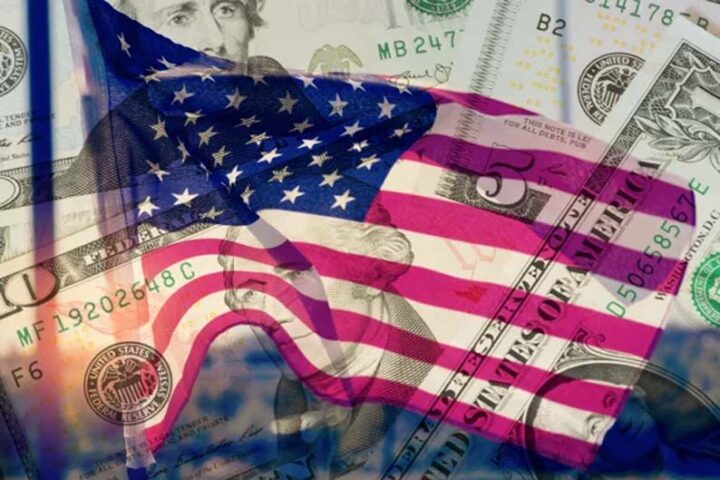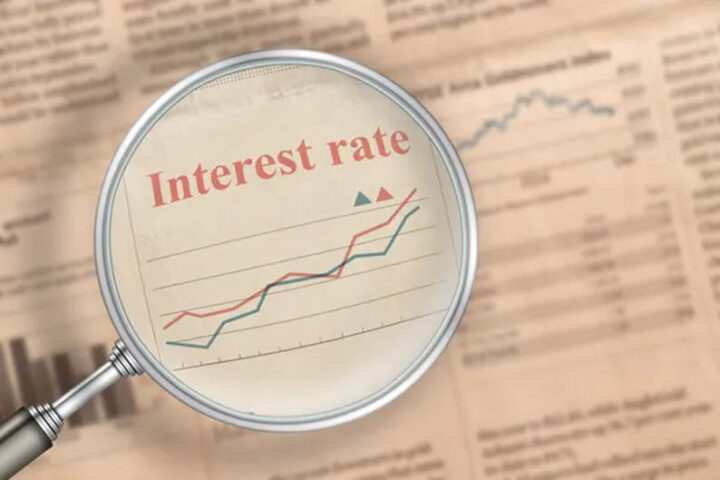By Jeffrey Halley
Last Friday’s Wall Street price action was enough to spark risk sentiment rallies on forex markets, led by the usual suspects, the Euro and the Australian Dollar, although not much love permeated into the Asian currency space.
Oil held steady, but gold found no solace and remains near $1700. We also saw a modest rally in commodity prices.
Bitcoin wound its way back to $21,000.00 Monday morning in the crypto space, although it has been grinding higher all last week. Even US yields fell slightly on Friday after that US data; go figure?
With a relatively thin US data calendar this week, the FOMO gnomes of Wall Street may enjoy a week in the sun.
I suspect that Europe and its travails will be front and centre this week, with a smattering of China covid zero and property market nerves thrown in for good measure.
The European Central Bank meets on Thursday to decide whether to hike its policy rates for the first time in 11 years, by a mighty 0.25%… That would take the Refinancing Rate to an inflation-fighting 0.25%, and the Deposit Rate to -0.25%, which I am sure will leave the Eurozone CPI quaking in its boots.
We should also get some insight into its antifragmentation tool, intended to keep Eurozone sovereign spreads “on message,” but is really their there to support Italy’s debt, because they clearly can’t do it themselves if one glanced at the weekend news.
Europe is a classic example of the perils of easy monetary policy and QE; it’s easy to take it out of the box, but as you get the financial system addicted to a zero per cent cost of capital, it’s hard to put it back. Europe isn’t alone here of course, and at least they can say “look at Japan.” High fives mes amis.
The reason we can discount a 0.50% hike from the ECB when that is the minimum clearly needed, is something far more important for Europe. Thursday, July 21, is gas-mageddon day for the Nord Stream 1 pipeline from Russia to Germany. Scheduled annual maintenance is due to finish that day, and the gas is supposed to start flowing again. I’ll give it another day because it’s Russia. But if flows don’t resume on Friday, that bear market rally by the Euro and European equities could well evaporate like the pipeline flows.
About energy, it is pleasing to see that sense is prevailing somewhere, and that Japan is restarting several mothballed nuclear power stations in preparation for winter. Nations everywhere should be looking at this solution right now. Especially as North America looks as far away as ever from getting its act together on gas and oil, pipelines to move it, and refineries to make it into energy and fertiliser etc for the world.
Japan’s moves are likely to bear more fruit than US President Biden’s visit to Saudi Arabia for a fist pump with MBS this weekend. Joe Biden emerged confident that Saudi Arabia and the UAE would pump more oil; Saudi Arabia emerged and said that’s up to OPEC+.
Oil prices are sharply unchanged Monday in Asia, which tells you who the market believes.
China officials from the PBOC promised more support for the economy over the weekend. And it appears that behind the scenes, the wheels are turning to engineer a funding vehicle for beleaguered property developers to continue and complete the construction of residential projects.
The alleged Chinese mortgage payment strike by homebuyers seems to have been the catalyst to spur faster action.
Conversely, covid-19 cases appear to be creeping higher around the Mainland, with Macau’s full lockdown extended by four days. The threat of covid-zero Part Deux in Shanghai and other large urban centres will temper bullish spirits among China equity investors.
Robust loan demand, and decent economic data last week, should mean that Wednesday’s one and five-year Loan Prime Rates remain unchanged.
Thursday also sees the Bank of Japan’s latest policy decision.
With USD/JPY finding a cap ahead of 140.00 for now, some pressure will ease on the BOJ, which will also be watching the country’s supply/demand energy balance and the spiralling Covid-19 caseload with concern. With the FOMC meeting not until the end of the month as well, there is little incentive for the BOJ to spring a shock and markets to change any monetary settings.
Like North America and Europe, Asia’s data calendar is fairly thin. With the FOMC in a pre-meeting news blackout, markets will be left to the tender mercies of headlines and geopolitical developments.
One benefit is that, excluding any shocks and a lack of Fed speaker rate-hike bombs, and annoying data that has to be ignored when it doesn’t tell the story the FOMO gnomes want to hear, it could give the aforementioned bear market rally, room to breathe.
Oil prices edge higher
Both Brent crude and WTI rose modestly on Friday as they continued to unwind the mid-week slump. In Asia, hopes of more China stimulus, and a lack of concrete production promises from President Biden’s Middle East visit have seen Brent crude prices climb in Asian trading.
Brent finished Friday’s session 1.25% higher at $100.80, having tested $102.50 intraday. In Asia, it has added another 1.25% to 101.80 a barrel. WTI rose by 1.17% to $97.60 on Friday, edging 0.3% to $97.90 in Asia Monday.
Brent has resistance at $102.50, and then 104.00, followed by a now distant $106.00. It has support at $98.30 and then 97.00, the 200-DMA. WTI has support at $94.30, the 200 DMA, and then $90.60. Resistance is at $99.00, followed by 101.00.
Supply risks remain evident in international markets, and futures curves remain in backwardation. Despite the ructions in the speculative futures markets, the real-world dynamic remains as supportive of oil prices as ever. If Russian doesn’t switch gas exports back on to Europe at the end of the week, Brent crude could once again, find itself back near $110.00 a barrel.
Gold remains unimpressive
Gold was notable on Friday; it felt no positive spill-over impact from the risk sentiment rally that swept other asset classes.
Gold finished Friday’s session 0.15% lower at $1707.50 an ounce. In Asia, continued US Dollar weakness has allowed it to show some belated gains, rising 0.50% to $1715.70 an ounce in yet another quiet Asian session.
Overall, gold’s price action continues to be uninspiring with recoveries limited in scope, while the falls, when they do occur, are much larger and faster in scope. The yellow metal’s fate this week rests on the hopes that the investor sentiment rally seen elsewhere, inspires more US Dollar weakness this week.
Gold has initial support at $1700.00, followed by the more important $1675.00 zone. A sustained failure of $1675.00 will signal a much deeper move, targeting the $1450.00 to $1500.00 regions in the weeks ahead.
Gold has resistance nearby at $1720.00, then $1745.00, now a triple top. That is followed by $1780.00, $1800.00, its June downward trendline.
Jeffrey Halley is Senior Market Analyst, Asia Pacific at OANDA
Opinions are the author’s, not necessarily that of OANDA Global Corporation or any of its affiliates, subsidiaries, officers or directors. Leveraged trading is high risk and not suitable for all. Losses can exceed investments.








